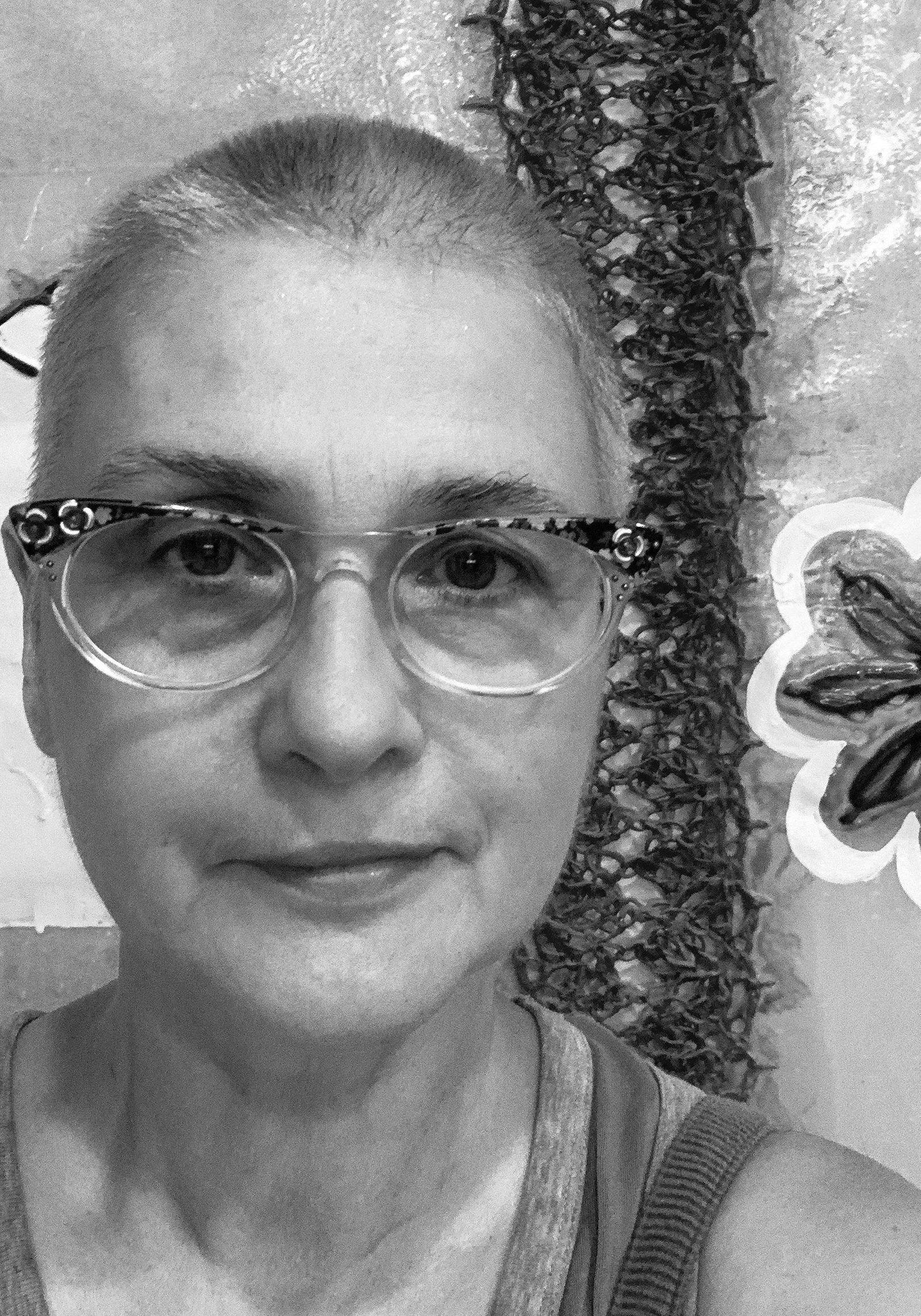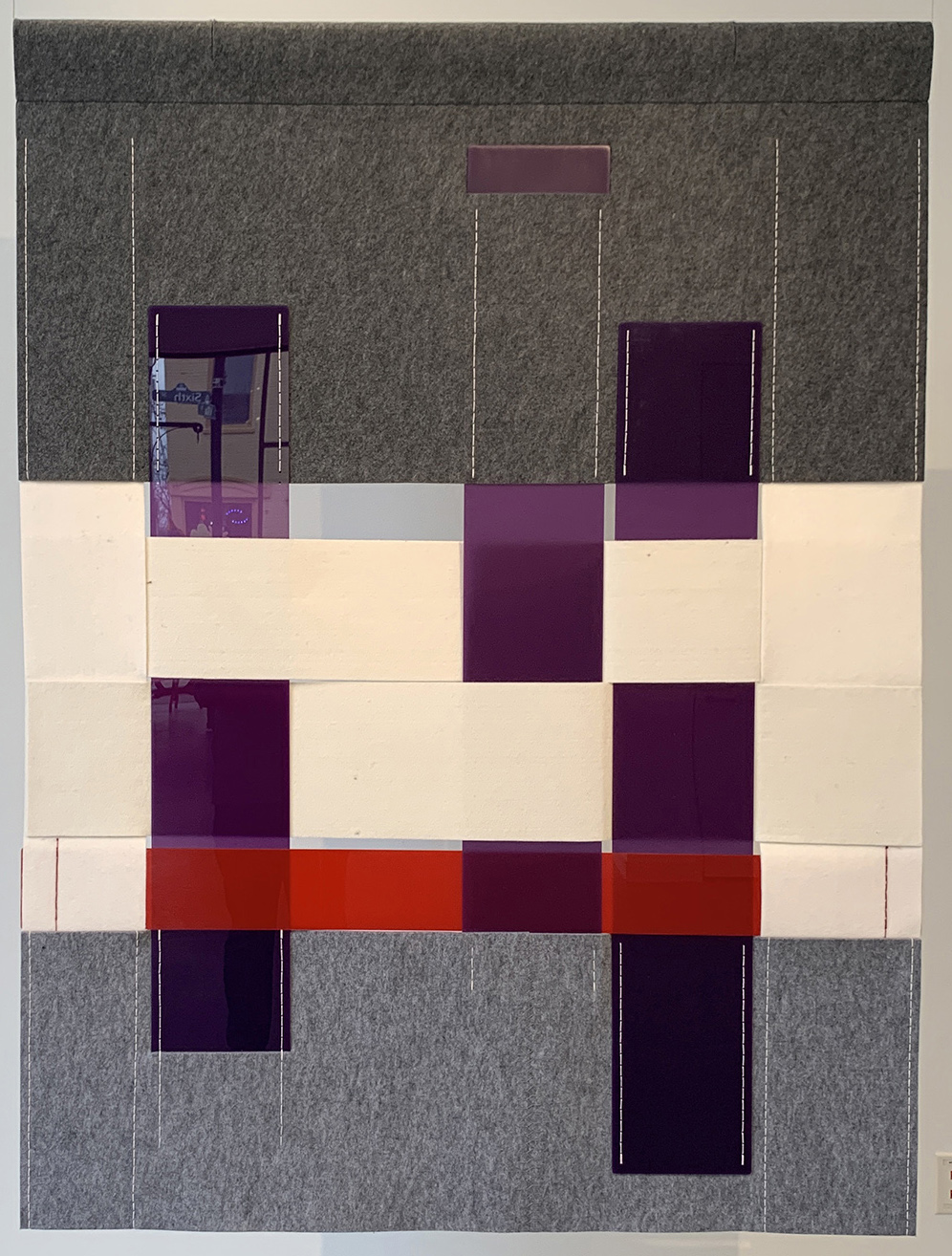Bio
Yvette Kaiser Smith is an artist who uses number sequences to create wall-based geometric abstractions where values of digits direct a composition’s formal structure. Exploring simple and direct ways to combine dissimilar materials, as slow stitching binds layers together, her new mixed-media work considers perception of the other and the other as part of us. A resident of Chicago since 1991, Yvette was born in Soviet-occupied Prague, Czechoslovakia in 1958, and immigrated with family to Dallas, Texas in 1969. Her 1990 BFA from Southern Methodist University focused on sculpture and photography and includes a fellowship to Yale School of Art Summer Program in Norfolk, Connecticut which was anchored in painting. Since receiving an MFA in Sculpture from University of Chicago in 1994, Yvette has exhibited extensively at regional museums, art centers, and university galleries throughout the United States. Exhibitions abroad include U.S. Embassies in Moscow, Ankara, and Abuja; National Art Museum of China in Beijing; alternative galleries in London, Rome, Madrid, Berlin, Jena - Germany, and Veliko Tarnovo - Bulgaria; art fairs in Berlin, Luxembourg, and Milan; also Bridges Mathematical Art Exhibitions in Linz, Austria and Stockholm, Sweden. In 2005 she began working with art consulting firms, galleries, and individual clients to create site-specific commissions which include Facebook Chicago, University of Illinois Urbana Champaign, San Diego Manchester Hyatt, Eaton Corporation in Cleveland, Rosewood Hotel Abu Dhabi, and Pricewaterhouse Coopers in NYC. She has been awarded residencies at Ragdale in Lake Forest, Illinois and ARV.International in Vishovgrad, Bulgaria.
Contact
Artist Statement
There are two constants in all my work: consciousness of a material’s specificity, based in the belief that every material process has its own language, its own unique way of articulating a concept; and the use of a system created for visualizing numerical values of sequences from the numbers pi and e. I create wall-based geometric abstractions, where values of digits direct a composition’s formal structure.
In my current body of work, I look for simple and direct ways to combine industrial felts with acrylic sheet scraps to create uniquely interconnected communities, bound together with slow stitching, a traditional craft element found across cultures and time. In combining dissimilar materials, this work challenges our perception of differences. It asks viewers to consider whether we see diversity as a hard difference that leads to the notion of otherness, or as variation within a unified group, others as part of us.

